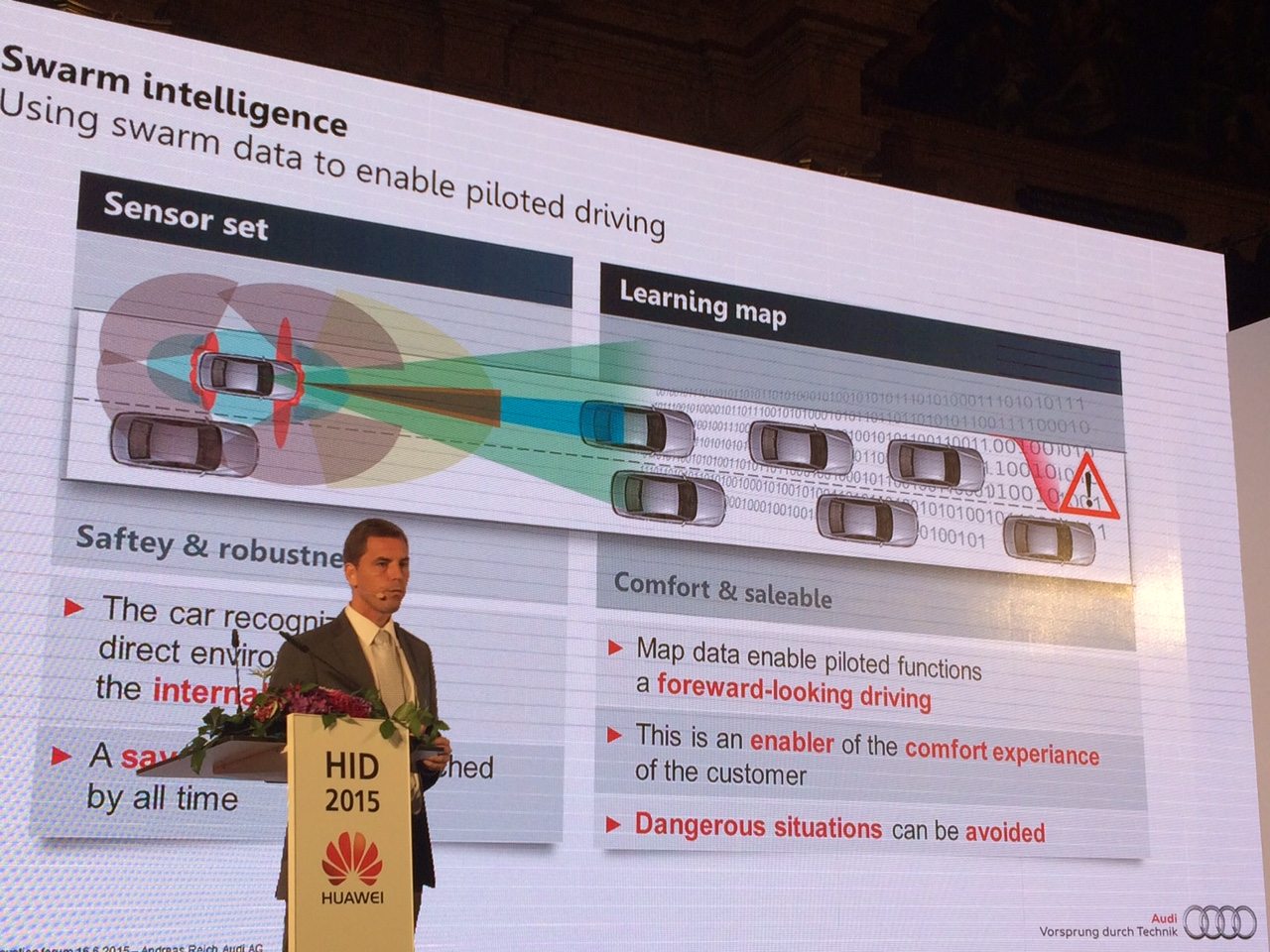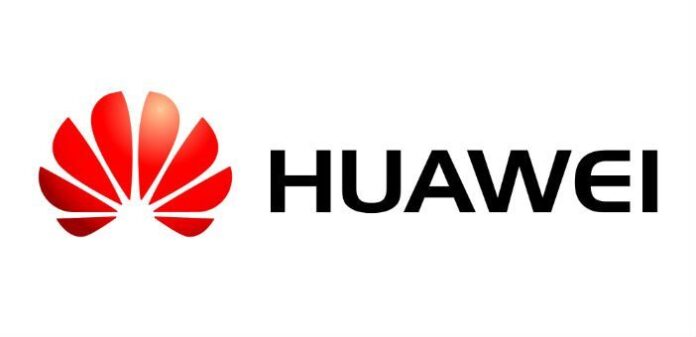MUNICH – Building on the update from the first day of Huawei Innovation Day, the second day was all about the connected world. Topics included connected cars, smart cities and wearables.
The connected car
Audi presented on the topic of the connected car, talking about the time to market for a vehicle – from when a functionality is developed (three to four years) and research completed on what drivers actually “need” while driving vs. what they might just want or think is cool (maps, music, voice-controlled functionality and data services). Audi and Huawei announced a partnership at CES Asia this year related to LTE in the vehicle, which is planned to launch in 2016 in China.
Audi also provided an interesting discussion about work on vehicle-to-x functionality. The first example was related to traffic lights: The system syncs with a city’s traffic lights and advises drivers of the speed required in order to have all green lights in the path ahead. The system also will countdown the time to the light changing; and if you have auto-start the vehicle will start five seconds before the light changes. In total, this functionality also reduces CO2 emissions. Of course it isn’t as easy as it sounds. The OEM, traffic management organizations and the city all have to work together to make it a reality. I seriously want this service.
https://www.youtube.com/watch?v=aJBObh_XEic
Swarm intelligence was also part of Audi’s presentation. This discussion focused on the linkage of data, the cloud and the car in order to enable vehicle-to-vehicle communications. One example walked the audience through the process of lane changing between cars and the importance of updated maps with correct lane information. The vehicle’s camera is also looking for new traffic signs specific to construction or dangerous situations. As you can imagine, these scenarios would not work during snowy weather unless the maps had current lane information included. Sensors and a learning map are required to stay tuned to the activities around the car in a confident manner.
The topic of V2V over “5G” was also visited. The answer was not, however, related to the technology as an inhibitor to this option, it was rather that the technology will work, but the challenge is that a live mobile network is being used and there is a cost associated with it, so who will bear the burden of this cost?
Autonomous driving is always a big topic when an OEM presents. Today there are tests being conducted by Audi in the areas of traffic congestion (up to 60 kmph) and parking while the driver is outside of the vehicle. As these tests progress, speeds will increase and more functionality will be provided. This will be an evolved process and will likely take 10 to 15 years for real autonomous driving to arrive beyond highways. The main reason is the unpredictability of pedestrians. Consider this scenario: You are driving and a person runs out in front of you. If you swerve you hit another car, if you don’t you hit the person – which do you choose? While emotion certainly plays a role with a human driver in control, which option will the autonomous car choose? Until those unpredictable situations can be addressed by the car, full autonomy can only happen in more controlled situations.
Smart cities
A presentation from Amsterdam ArenA and the work it is doing with the city of Amsterdam to create smarter arenas in smarter cities followed. 
Wearables
Wearable Technologies spoke about the categories of wearables – in your body, on your body and near your body. At first the market consisted of sports/fitness and medical wearables. Today the focus is on fashion, and in the future wellness, industrial and lifestyle will come into play. When talking about fashion-related wearables the focus was on “shy” technology – technology that no one notices is there. The “in your face” mode of wearables is passing – think Google Glass.
Huawei spoke about its recently launched lifestyle watch and the importance of wearables that combine emotion, fashion and technology. I was pleasantly surprised to hear this discussion. The link between the smart watch and the connected car also came into play with the ability for the watch to measure and notify unsafe activities based on communicating with the sensors in the vehicle. The presentations were followed by a lively panel discussion with industry experts on the topic of wearables, their integration with an ecosystem to drive adoption, the role for the mobile network operator and how wearables might “chat” with other smart things in the future. 
Before heading out for a tour of Huawei’s European Research Institute, there was a discussion about Huawei’s 5G initiatives and a short preview of its 5GVIA (vertical industry accelerator) – a real world testbed for 5G in Munich. 
All in all an impressive showing of innovation and partners here in Munich.
Like what you read? Follow me on twitter!
Claudia Bacco, Managing Director – EMEA for RCR Wireless News, has spent her entire career in telecom, IT and security. Having experience as an operator, software and hardware vendor and as a well-known industry analyst, she has many opinions on the market. She’ll be sharing those opinions along with ongoing trend analysis for RCR Wireless News.

